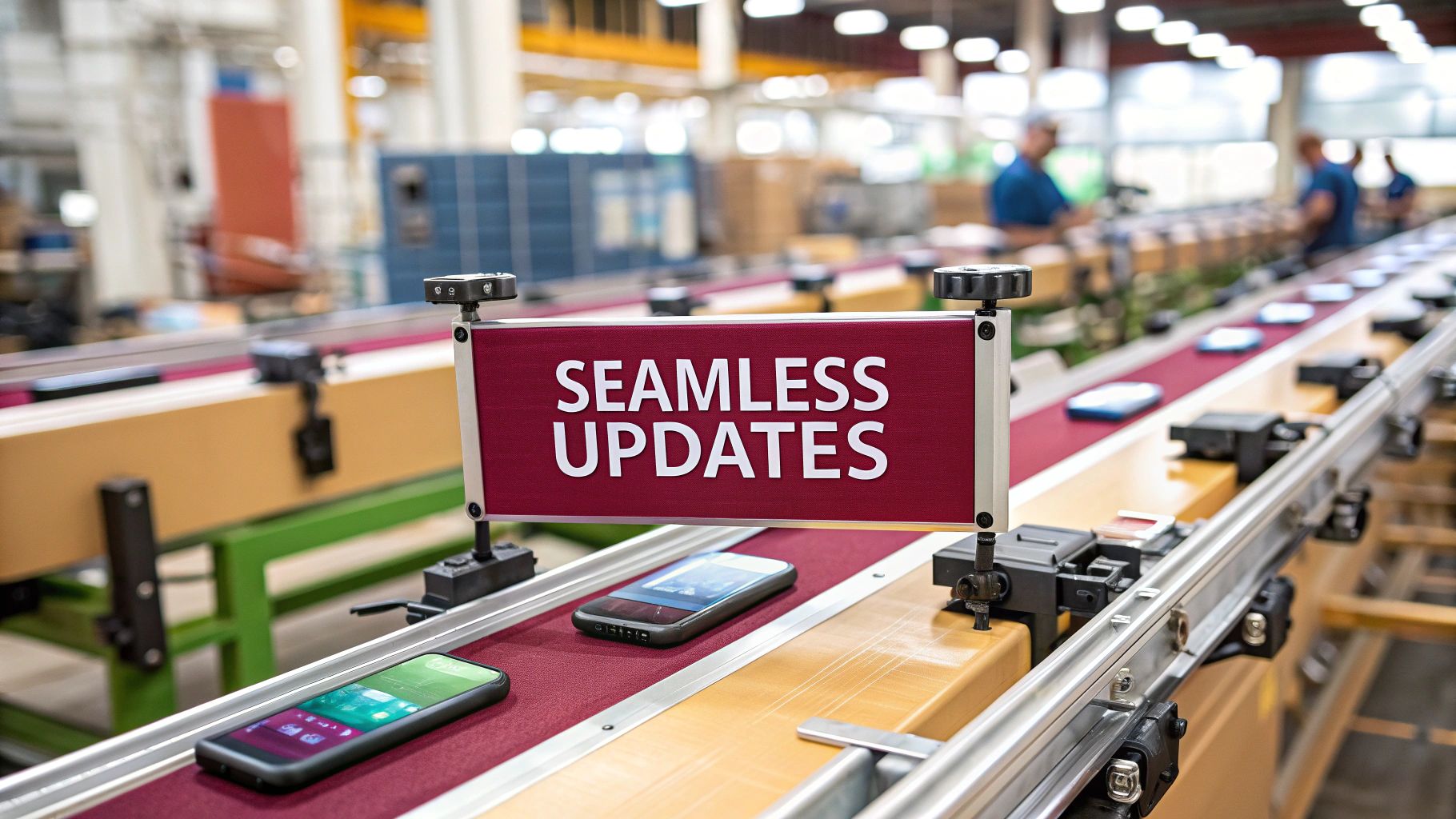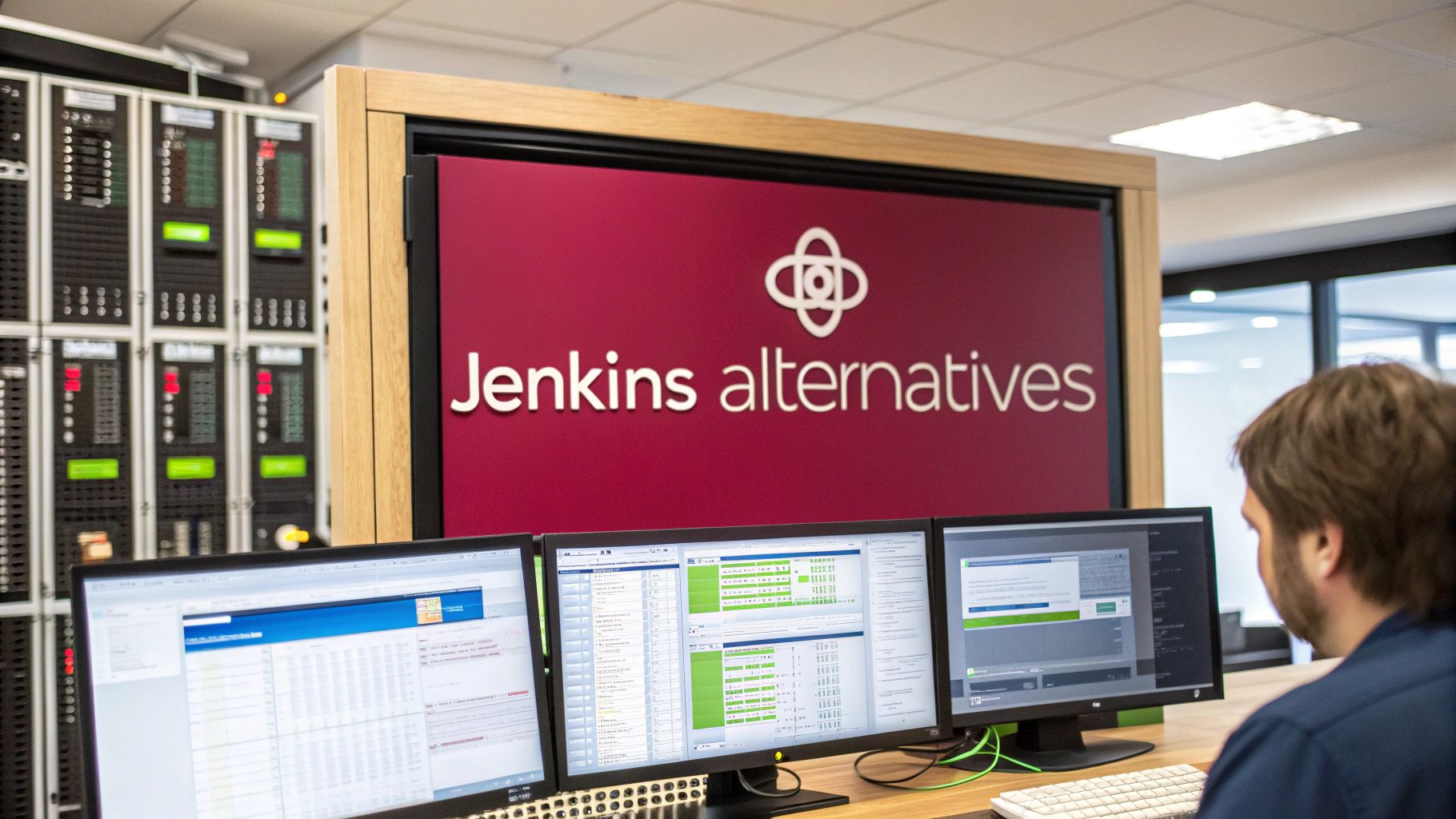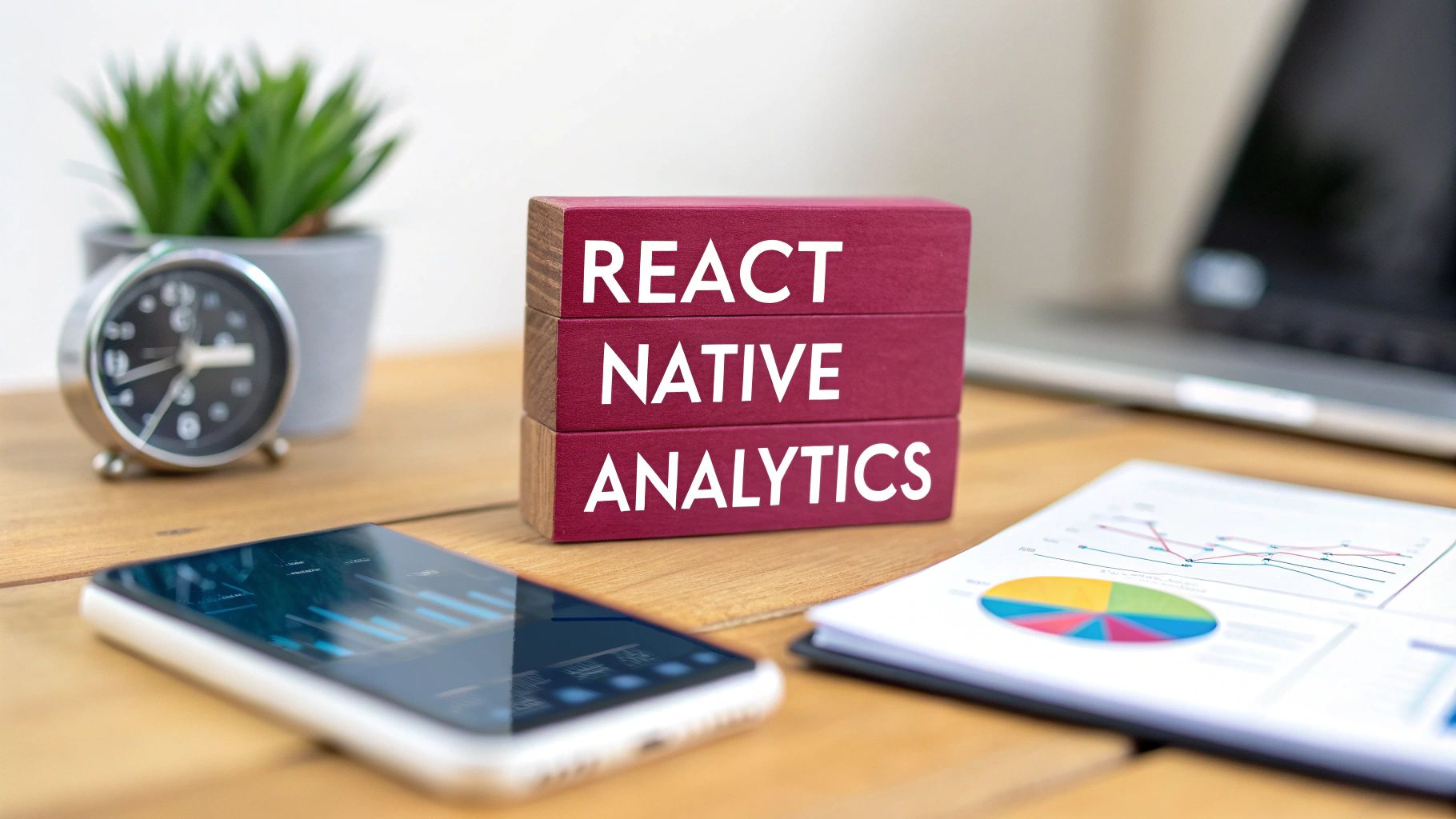Understanding Mobile App Continuous Delivery: The Game Changer
Imagine building a house brick by brick, meticulously placing each one, then waiting months before adding the next layer. That’s how traditional mobile app releases often worked. Weeks, even months, were dedicated to preparing a single release, followed by nail-biting waits for app store approvals and user downloads. Mobile app continuous delivery changes all that, transforming the process from a long, drawn-out construction project to something more dynamic, something constantly evolving.
This shift isn’t just about speed. It’s about fundamentally changing how your team interacts with releases. Instead of dreading each update, teams can embrace releases as opportunities for improvement and innovation. The approach allows for smaller, more frequent releases, minimizing the risk associated with large, infrequent updates. It’s like adding a room to your house at a time, rather than building the entire structure all at once. If there’s an issue with the new room, it’s much easier to fix than deconstructing a whole house.
The image below illustrates the iterative nature of continuous delivery, highlighting the constant cycle of development, testing, and release.
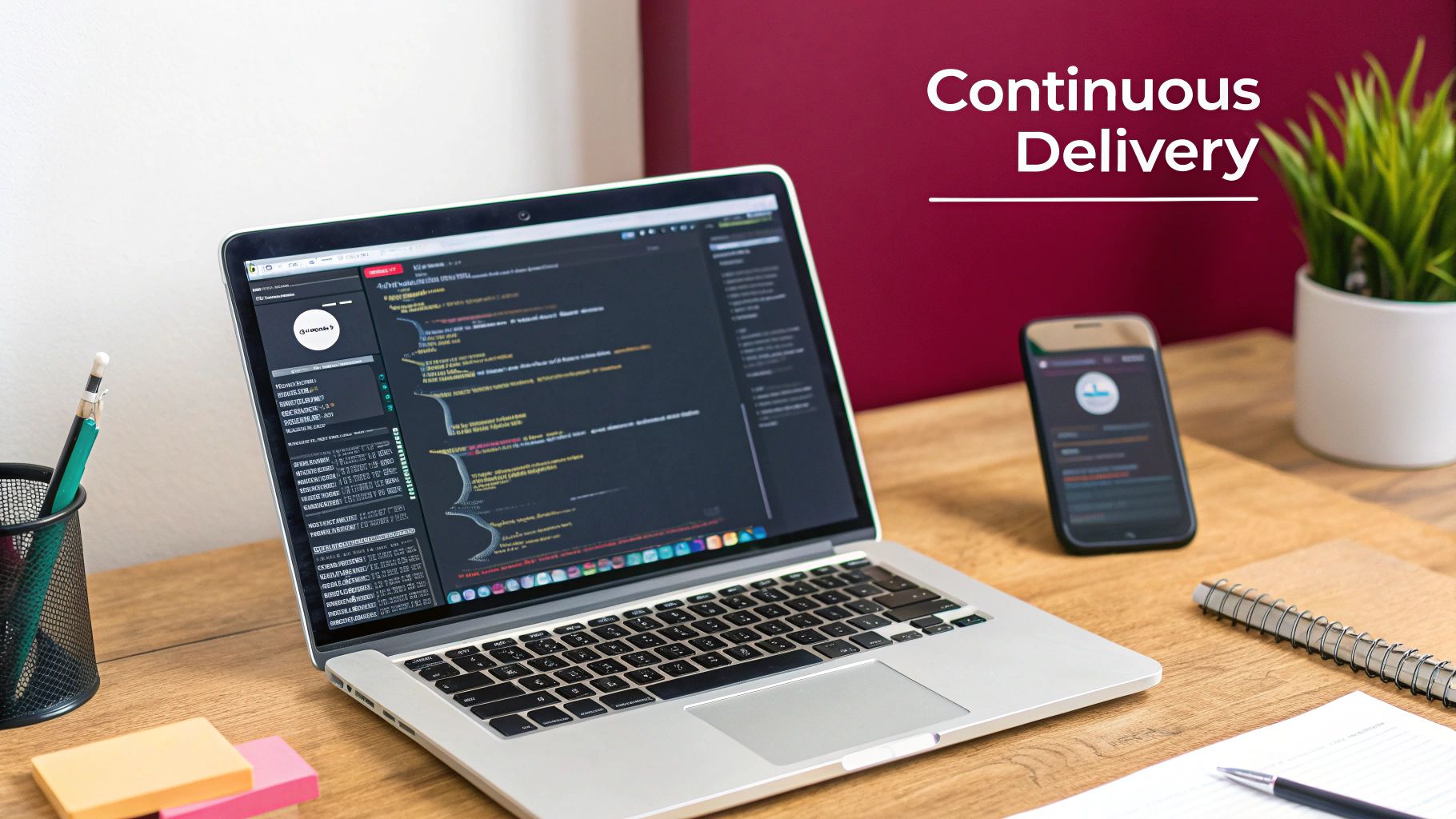
The diagram shows how continuous integration feeds into continuous delivery, ensuring every code change undergoes thorough testing before deployment. This constant feedback loop enables teams to identify and address issues early in the development process. Want to learn more about this crucial process? Check out our guide on CI/CD pipelines.
This continuous cycle is essential in the fast-paced world of mobile app development. The need for continuous delivery in mobile app development stems from rising consumer expectations and rapid technological advancements. By 2025, mobile app revenue is projected to reach $613 billion, emphasizing the industry’s incredible growth.
Continuous delivery is vital for maintaining user engagement and satisfaction, especially in the mobile sector where user retention is a significant challenge. For instance, Android apps retain only 2.1% of users after 30 days. Continuous delivery, by facilitating frequent updates and improvements, helps apps stay competitive and engaging. Discover more insights into app development statistics.
Instead of reacting to problems, this proactive approach allows developers to anticipate user needs and address feedback quickly. Through this iterative process, mobile app continuous delivery empowers developers to build better apps, faster, and more reliably.
Building Your Mobile App Continuous Delivery Foundation
Imagine setting up a finely-tuned assembly line, but for mobile apps. Each piece needs to work perfectly with the others, but the blueprint is quite different from what you’d use for a web application. The mobile world throws some unique curveballs – app store approvals, the sheer variety of devices and operating systems – and these demand specialized solutions.
Take a look at this infographic visualizing the core advantages of a smooth-running mobile app continuous delivery process.
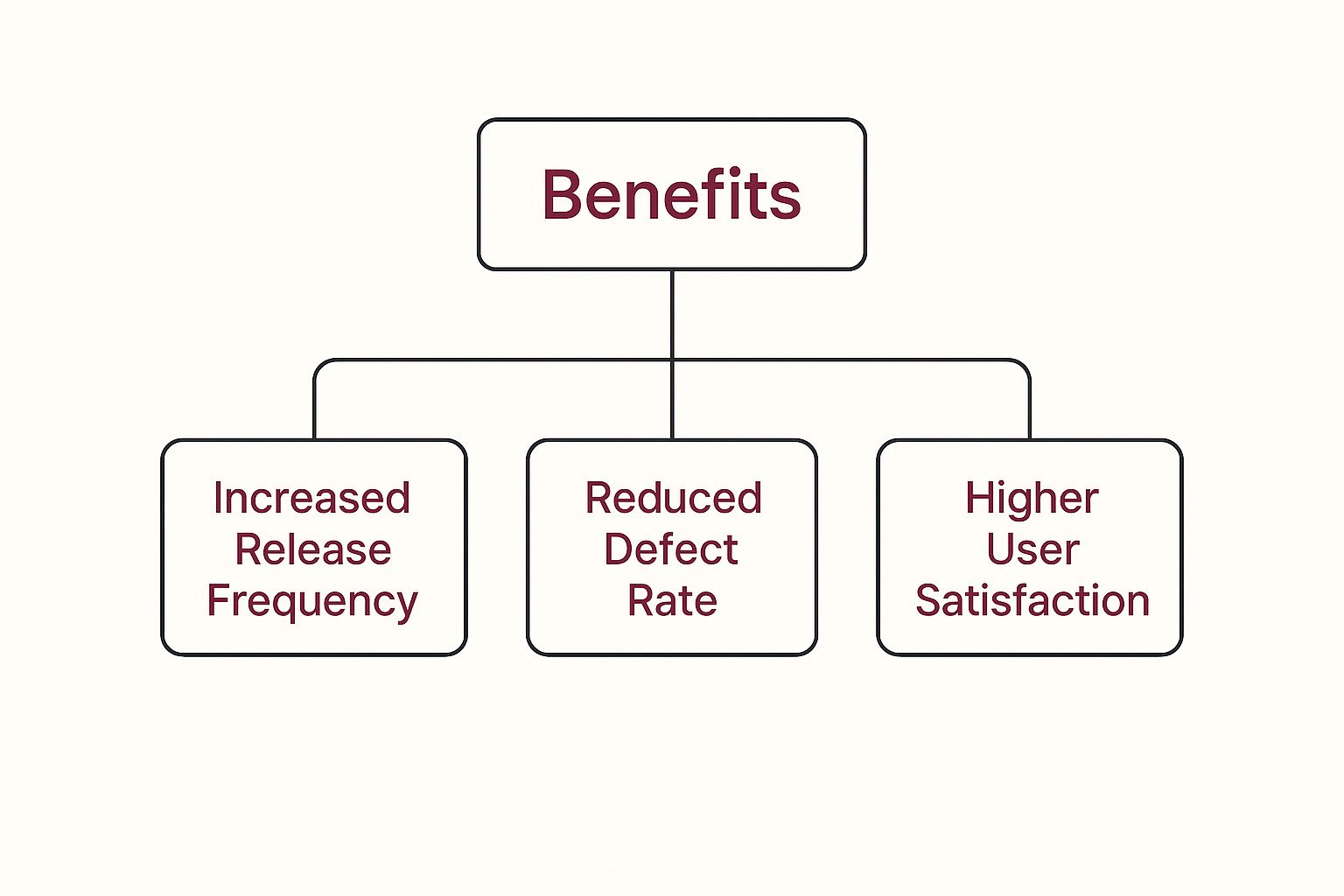
As you can see, mobile app continuous delivery feeds directly into more frequent releases, fewer bugs, and happier users. These benefits create a virtuous cycle, driving further improvement and innovation.
Essential Infrastructure for Mobile CI/CD
A successful mobile app continuous delivery setup relies on a strong foundation. Let’s explore the key building blocks:
- Code Repositories: Think of your code repositories like the organizing bins in your assembly line. Structuring them correctly to support different platforms (iOS, Android) is crucial. A clear branching strategy for handling platform-specific code versus shared components can prevent major headaches later on.
- CI/CD Pipelines: Standard CI/CD pipelines need a mobile-specific tune-up. This involves integrating steps like code signing, managing app store metadata, and coordinating builds across multiple platforms. Tools like Fastlane can automate a lot of this heavy lifting.
- Feature Flags: These are like secret switches for your app. They empower you to roll out new features safely and gradually, without waiting for app store approval. You can turn features on for specific user groups or slowly increase the rollout percentage, minimizing the fallout from unexpected bugs.
Testing and Architecture
In the fragmented world of mobile, testing is paramount. A comprehensive testing strategy should include:
- Device-Specific Testing: Emulators and simulators are handy tools, but nothing beats testing on actual physical devices. Cloud-based device farms offer a way to test across a wider range of hardware and operating system versions.
- Automated UI Testing: Automating your UI tests can catch regressions early on and maintain a consistent user experience across all those different devices.
Architectural patterns also play a crucial role:
- Containerization: Imagine using standardized containers, like Docker, to package and ship parts of your app. This simplifies the build process and ensures consistency across different environments.
- Cloud-Native Approaches: Using cloud services can streamline infrastructure management and allow your app to scale smoothly with demand.
- Microservices (Where Applicable): For some mobile projects, adopting microservices principles can boost modularity and make deployment more flexible.
To dive deeper into the specifics of Android CI, check out our guide: Android Continuous Integration.
The table below outlines the key pieces of a mobile continuous delivery pipeline and provides further details on their roles and mobile-specific requirements:
Essential Components of Mobile App Continuous Delivery Pipeline
| Component | Purpose | Mobile-Specific Considerations | Popular Tools |
|---|---|---|---|
| Code Repositories | Version control and collaboration for code. | Branching strategy for platform-specific code. | GitHub, GitLab, Bitbucket |
| CI/CD Pipelines | Automates building, testing, and deploying code. | Code signing, app store metadata management. | Fastlane, Jenkins, CircleCI |
| Feature Flags | Enables controlled feature rollouts. | Target specific user segments. | LaunchDarkly, Optimizely, Firebase Remote Config |
| Device Farms | Provides access to a range of physical devices for testing. | Essential for comprehensive testing. | AWS Device Farm, Firebase Test Lab, BrowserStack |
| UI Testing Frameworks | Automates UI testing across various devices. | Choose frameworks compatible with your tech stack. | Appium, Espresso, XCUITest |
| Containerization Tools | Packages application and dependencies for consistent environments. | Simplifies build processes and environment management. | Docker, Kubernetes |
This table helps clarify the unique tools and considerations necessary for mobile continuous delivery. By investing in this robust foundation, you’re setting your team up for success, ensuring frequent, reliable releases that create a positive user experience.
Conquering Platform Challenges In Mobile Continuous Delivery
Mobile app continuous delivery presents unique challenges. Unlike web apps where deployment is under your control, mobile apps must navigate the requirements of Apple and Google while maintaining rapid release cycles. It’s a balancing act requiring careful planning and specialized techniques.
Navigating the App Store Maze
Think of app store reviews like passing through airport security. You need the right documentation, and even then, delays can happen. How can we maintain deployment frequency without getting bogged down?
- Phased Rollouts: Imagine slowly opening a faucet instead of turning it on full blast. Release updates to a small percentage of users initially, then gradually increase the rollout if no major issues arise. This limits the impact of unforeseen bugs and allows for early feedback.
- Feature Flags: Think of these as light switches for your app’s features. Decoupling feature releases from app store updates using feature flags allows you to turn functionalities on or off remotely, regardless of the app version.
- Streamlined Metadata Updates: Automating updates to app store descriptions, screenshots, and other metadata saves manual effort and reduces delays. It’s like having a robot fill out those tedious forms for you.
Taming the Device Zoo
The sheer diversity of mobile devices presents another hurdle. Supporting various OS versions and coordinating releases across app stores require a robust strategy.
- Comprehensive Device Testing: Using cloud-based device farms, like BrowserStack or AWS Device Farm, allows you to test on a wide array of real devices. It’s like having a QA team with access to every phone and tablet imaginable.
- Platform-Specific Code Branches: Maintaining separate code branches for iOS and Android helps address platform-specific requirements. Think of it as parallel roads leading to the same destination, allowing for customized journeys. However, careful management is crucial to avoid divergence and maintenance headaches.
- Automated Build Configurations: Tools like Fastlane automate the tedious aspects of build settings, code signing, and certificate management, freeing up your team for more important work.
Hotfixes and Emergency Responses
Even the best laid plans can go awry. What happens when an urgent hotfix is needed? How do we navigate the app store process quickly? You might find this helpful: exploring blue-green deployment strategies for minimizing disruption.
- Expedited Review Requests: Both Apple and Google offer expedited reviews for critical bug fixes. Clearly communicate the issue’s urgency and impact to get fast-tracked.
- Over-the-Air (OTA) Updates (Where Applicable): For certain updates, technologies like CodePushGo can bypass the app store entirely. This enables near-instant delivery of critical fixes, minimizing user frustration. Think of it as a direct line to your users.
Mobile continuous delivery requires adapting to the mobile ecosystem. By adopting these strategies, you can navigate platform challenges effectively and maintain a consistent flow of high-quality updates, benefiting both your team and your users.
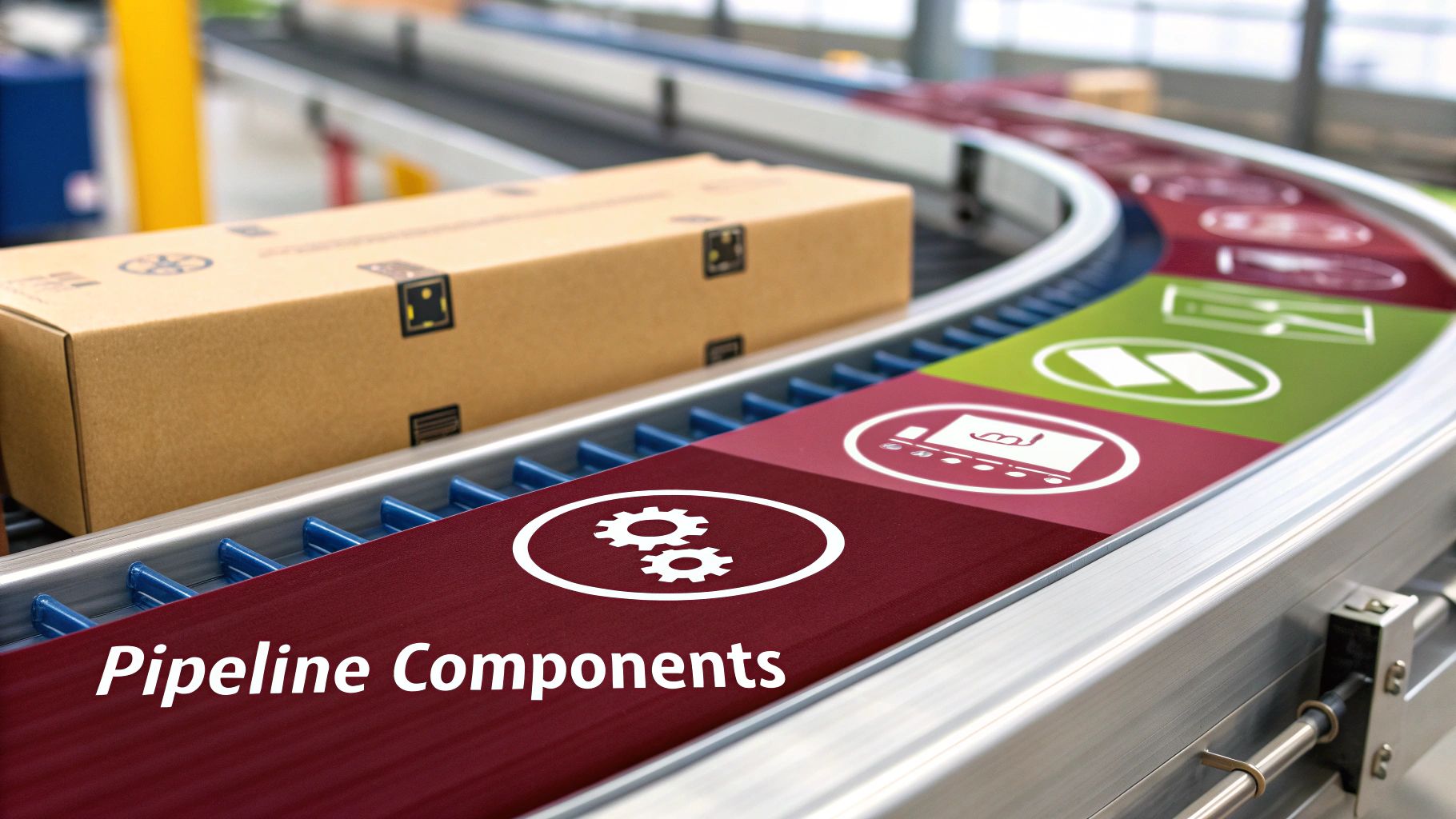
The Evolution Of Mobile Continuous Delivery Technology

The world of mobile apps moves fast. Users expect frequent updates and a constant stream of new features. This rapid pace requires a different approach than traditional, infrequent releases. Enter mobile app continuous delivery, a method that enables faster and more reliable releases to keep up with these demands. This evolution is all about making the development process more agile and efficient.
One of the major drivers of this shift is the rise of cloud-native technologies. Think of it like moving from a cramped, on-site workshop to a spacious, adaptable factory in the cloud. Cloud platforms like AWS and Azure offer flexibility and scalability that traditional on-premise servers simply can’t match. This makes building and managing mobile deployment pipelines much smoother.
Another important factor is AI-driven automation. Imagine orchestrating releases across iOS, Android, and other platforms – it’s a complex dance. AI helps automate and optimize this process, freeing up developers to focus on building great apps, not managing complicated release schedules. This makes continuous delivery more accessible to a broader range of teams, no matter their size or expertise.
Modernizing the Mobile Build Process
Containerization and serverless architectures are further streamlining the mobile build process. Containerization, using tools like Docker, packages apps and their dependencies into portable, self-contained units. This ensures consistency across different environments, much like shipping goods in standardized containers. Serverless computing, meanwhile, takes the hassle out of server management, allowing developers to concentrate solely on their code. It’s like having a virtual IT team that takes care of all the server infrastructure behind the scenes.
The adoption of these technologies varies across industries. Sectors like technology and finance, where rapid innovation and high reliability are critical, tend to be at the forefront. This is driven by the ever-increasing demand for software releases that are both faster and more dependable.
The Economic Impact of Continuous Delivery
The move towards continuous delivery isn’t just about technical improvements; it’s also fueled by tangible economic benefits. Reducing manual processes through automation saves money, and a quicker time-to-market translates directly to a stronger bottom line. These cost savings and revenue gains make a compelling case for investing in continuous delivery.
The global market for continuous delivery technology was valued at roughly $3.67 billion in 2023 and is expected to grow at a 19.2% compound annual growth rate (CAGR) from 2024 to 2030. This growth reflects the increasing demand for faster, more reliable software releases, especially in fast-paced industries like tech and finance. Discover more insights. These tangible returns make continuous delivery a compelling investment. In today’s competitive app market, continuous delivery is quickly moving from a best practice to a necessity for staying ahead of the curve.
Real Teams, Real Results: Mobile Continuous Delivery Success
Mobile app continuous delivery. It’s a phrase that gets thrown around a lot. But what does it actually mean for your team and your app? It’s more than just a collection of tools or a checklist of processes. It’s a fundamental shift in how you approach building and releasing mobile apps. Think of it as a constantly flowing river, rather than a series of stagnant ponds. To really grasp the power of continuous delivery, we need to look at how real teams put it into practice.
Lessons from the Trenches
Let’s ditch the theory for a moment and dive into some real-world examples. Seeing how other companies, from scrappy startups to established enterprises, have implemented mobile app continuous delivery provides valuable lessons we can all learn from.
-
Startup Success: Imagine a small startup, racing to get their first app to market. They’re lean, agile, and everyone wears multiple hats. This cross-functional team structure means everyone contributes to the release process. Decisions are made quickly, and they can react to user feedback in near real-time. It’s like a small speedboat, nimble and quick to change direction.
-
Enterprise Evolution: Now picture a large enterprise, with multiple mobile app teams and a vast codebase. They might opt for a more structured approach, with dedicated release engineering teams supporting various product groups. This adds consistency and control, like a large, well-oiled ship navigating a complex route.
Cultural Transformation and Stakeholder Buy-In
Continuous delivery isn’t just about the technology. It’s about people, too. It’s about changing how teams work together and how they think about releasing software. This requires a shift in mindset and a willingness to embrace a new way of doing things.
-
Building Trust: Frequent releases can seem scary at first. “What if we break something?” Demonstrating the positive impact of smaller, more manageable updates helps calm these fears. Show stakeholders the data: reduced bug rates, faster feedback cycles. Evidence builds trust.
-
Open Communication: Keep everyone in the loop. Regularly communicate progress, challenges, and success metrics. Transparency builds buy-in and keeps everyone moving in the same direction.
You might be interested in exploring mobile app update strategies to enhance your continuous delivery process.
Tackling Technical Challenges
Of course, continuous delivery presents some technical hurdles. But these aren’t insurmountable. Let’s look at a few common challenges and how real-world teams have overcome them:
-
Database Migrations: Think of your database like the foundation of your app. Frequent updates often mean changing that foundation. Techniques like versioned schemas (keeping track of different versions of your database structure) and blue/green deployments (switching between two identical environments) minimize disruption during these changes, ensuring a smooth user experience.
-
User Data Management: Protecting user data during updates is paramount. Robust backup and restore procedures are essential, like having a safety net. Differential updates (sending only the changes) also help manage data efficiently.
-
Performance Monitoring: You don’t want your app to slow down with each update. Continuous monitoring and automated performance tests help catch and fix performance issues early. It’s like having a constant health check for your app.
Practical Frameworks and Timelines
So, how long does it take to set up continuous delivery? It depends. Real-world examples provide a helpful guide:
-
Small Team, Simple App: A small team with a straightforward app could implement continuous delivery in a few weeks, focusing on automating the essentials: building, testing, and deploying.
-
Large Team, Complex App: A larger team with a more complex app might need several months, taking a phased approach, tackling different parts of the release pipeline step by step.
To help illustrate this further, let’s take a look at a few different approaches:
Mobile App Continuous Delivery Implementation Approaches
| Team Size | Implementation Approach | Key Tools | Timeline | Success Metrics |
|---|---|---|---|---|
| Small | Cross-Functional Team | Fastlane, Jenkins | 2-4 weeks | Release frequency, bug rate |
| Large | Dedicated Release Team | Harness, CircleCI | 3-6 months | Deployment time, user feedback |
By learning from others’ experiences, you can gain valuable insights into the practical side of mobile app continuous delivery. These real-world lessons bridge the gap between theory and practice, helping you build a more robust and reliable release process for your app. It’s about making releases smoother, faster, and ultimately, less stressful.
Avoiding Common Pitfalls In Mobile Continuous Delivery
Mobile app continuous delivery offers huge advantages, but it’s not a magic bullet. Even with the best of intentions, things can go sideways, leading to frustration and a pile of technical debt. Let’s explore some common pitfalls and how to avoid them – learning from others’ mistakes can save your team valuable time and resources.
Automation Gone Wrong
Automating everything sounds fantastic. However, poorly planned automation can be like a runaway train – it can cause more problems than it solves. Imagine an automated testing system that’s so unreliable it’s constantly raising false alarms. Developers start ignoring these “alerts,” and the whole system becomes useless. The key is to automate the right things: repetitive tasks and predictable processes. Don’t automate complex tasks requiring human judgment.
Burnout From Release Overload
Frequent releases are a key part of continuous delivery. But if not managed carefully, it can lead to team burnout. Imagine being constantly on high alert, prepping for the next release with no time to breathe. It’s crucial to establish a sustainable release cadence – find a rhythm that works for your team and product. Prioritize team well-being over pure speed.
Neglecting Code Quality
Under pressure to release frequently, code quality can suffer. Think of it like rushing to finish a painting – speed often leads to messiness. Implement thorough code reviews and automated quality checks that act as gatekeepers. These checks prevent buggy code from reaching users, acting like a quality control system, catching defects early.
Insufficient Monitoring
Imagine driving a car without a speedometer or fuel gauge – you’d be flying blind! Similarly, deploying apps without proper monitoring leaves you clueless about performance issues and user behavior. Implement monitoring strategies that provide actionable insights, not just mountains of data. Focus on crucial metrics: crash rates, user engagement, and other key performance indicators (KPIs). This helps you understand how users interact with your app and where you can improve. For more on automating app updates, check out our article: Learn More in Our Article About Automatic App Updates.
Inadequate Team Training
Continuous delivery requires a change in mindset and new skill sets. Introducing new tools without proper training is like handing someone a chainsaw without safety instructions – disastrous! Invest in training that builds confidence, not anxiety. Provide hands-on learning and mentorship, ensuring everyone is comfortable with the new processes.
Ignoring User Feedback
Continuous delivery should be user-centric. Ignoring user feedback is like building a house without asking the future occupants what they need. Establish feedback loops that capture user input and integrate it into your release cycle. This feedback is gold – use it to improve and ensure your app meets user expectations. This creates a cycle of continuous improvement, driven by the people using your app every day.
By addressing these common pitfalls, you can build a sustainable and effective mobile app continuous delivery process. This leads to better app ratings, less downtime, and a happier, more productive development team.
Key Takeaways: Your Mobile Continuous Delivery Action Plan
This section boils down the most important points about mobile app continuous delivery and gives you a practical plan to put it into action or improve what you already have. Whether you’re just getting started or want to fine-tune your current process, these takeaways will be your guide.
Evaluate Your Current Pipeline
Before jumping in, take stock of your current development process. Ask yourself these questions:
- Release Frequency: How often do you release updates? Do releases feel stressful, or are they smooth and predictable?
- Testing Practices: Are you using unit tests, UI tests, integration tests, performance tests, or a mix? How much of your testing is automated?
- Deployment Process: How do you deploy your app? Are there manual steps you could automate?
Prioritize High-Impact Improvements
Concentrate on the areas that will give you the biggest bang for your buck. Here are a few good places to start:
- Automate the Essentials: Automate building, testing, and deployment. This frees up your developers and reduces errors. Tools like Fastlane can be a real help here.
- Implement Feature Flags: Decouple releasing new features from app store updates. This allows for faster rollouts and reduces risk.
- Optimize for Mobile: Mobile has unique challenges, like code signing and platform fragmentation. Don’t ignore them!
Build Team Consensus
Continuous delivery needs everyone on board. Here’s how to get everyone excited about it:
- Start Small: Choose a pilot project or a small section of your app to demonstrate the advantages of continuous delivery.
- Communicate Clearly: Keep the team in the loop about progress, challenges, and what’s working well. Transparency builds trust.
- Provide Training: Make sure your team has the skills and knowledge they need to succeed.
Realistic Timelines and Expectations
How long implementation takes depends on the size of your team and how complex your project is.
- Small Teams: A small team working on a relatively simple app might implement continuous delivery in a few weeks.
- Larger Teams: Larger teams with more complex apps might need several months, rolling things out in phases.
Keep an eye on your progress and adjust your timelines as needed. Don’t rush – a well-planned implementation will pay off more in the long run.
Success Criteria and Warning Signs
Track these metrics to see how well you’re doing:
- Increased Release Frequency: Aim for more frequent, smaller releases.
- Reduced Bug Rates: Continuous testing should result in fewer bugs making it into production.
- Improved Team Morale: Automation should free up developers and reduce the stress of releases.
Be on the lookout for these warning signs:
- Automation Overkill: Automating everything isn’t always the answer. Focus on the right things.
- Team Burnout: Make sure you have a release cadence that your team can sustain.
- Neglecting Code Quality: Keep your code clean with code reviews and automated checks.
By following these key takeaways, you can build a robust mobile app continuous delivery process that’s good for both your users and your development team. Ready to take your React Native app updates to the next level? Check out CodePushGo for streamlined over-the-air updates and a faster, more efficient release process.

